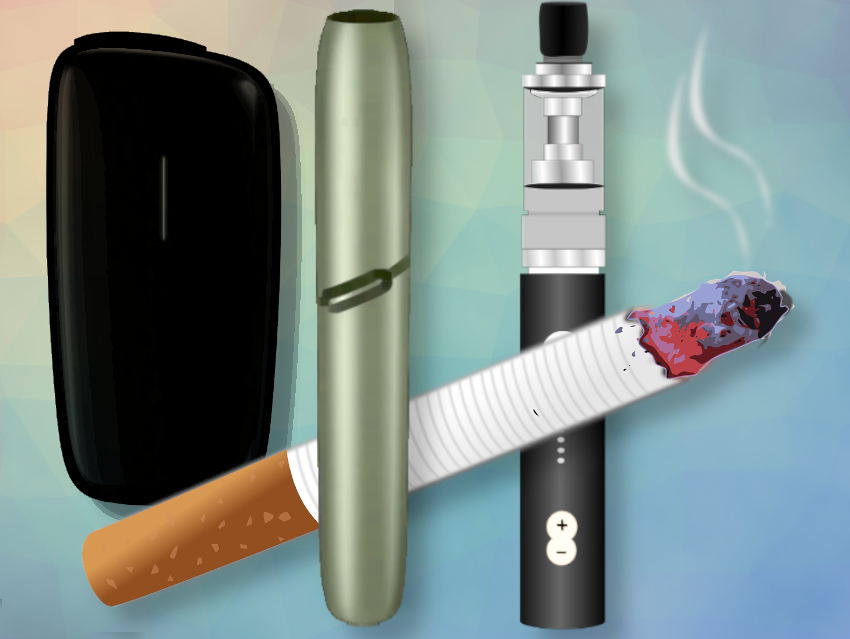E-cigarettes heat a liquid containing nicotine. Tobacco heaters such as Philip Morris’ Iqos, British American Tobacco’s Glo, or Japan Tobacco International’s Ploom X contain actual tobacco. Processed tobacco leaves are formed into sticks that are inserted into the battery-powered heater. The sticks are heated to temperatures up to 350 °C with a heating blade. In comparison, a cigarette burns at 800–1100 °C.
The tobacco sticks also contain water and humectants such as glycerin and propylene glycol. When vaporized, these draw nicotine and other tobacco ingredients into an aerosol that the consumer inhales through a filter. The device’s battery limits the number of puffs—depending on their depth—to between 5 and 14, after which the stick is disposed of, and the device’s battery is recharged in the storage container.
Brigitte Osterath, writingscience.de, Bonn, Germany, learned during her research into whether tobacco heaters are healthier than cigarettes that the sticks’ aerosol contains fewer substances involved in the development of tobacco-related cancers. Carcinogenic aldehydes such as formaldehyde, acrolein, and acetaldehyde are reduced by 80–96 %; volatile organic compounds such as benzene, styrene, and toluene are reduced by up to over 99 %; tobacco-specific nitrosamines are reduced by 80–90 %; polycyclic aromatic hydrocarbons, as well as CO, are reduced by 90 %; and mercury is reduced by 75 %. This is not that difficult, however, given the amount of carcinogenic and toxic substances in cigarette smoke.
The 90–95 % pollutant reduction touted by the tobacco industry refers exclusively to substances on the U.S. Food and Drug Administration’s (FDA) list of harmful and potentially harmful constituents (HPHCs). At the same time, tobacco heater aerosol contains at least 56 other substances in higher concentrations than in cigarettes that are not on this list. These include the humectants propylene glycol and glycerol, and their decomposition products glycidol, acetol, and 2-propen-1-ol. The amount of carcinogenic glycidol, for example, is over three times higher than in cigarette smoke. Above all, α,β-unsaturated carbonyl compounds, 1,2-dicarbonyls, furans, and epoxides are elevated in tobacco aerosol. For many of these substances, there is hardly any data on toxicity so far. Especially in the case of carcinogenic substances, small amounts are often very dangerous and the concentration-response relationship is not linear, especially not in the case of such complex toxic mixtures as cigarette smoke.
In the case of smoking, it has been seen that it takes decades to know the health consequences, especially when cardiovascular diseases or cancer are involved. Long-term studies for tobacco sticks do not yet exist.
Nicotine, which is addictive, is present in equal amounts in cigarettes and tobacco heaters. The nicotine kick for the consumer is said to be less with tobacco heaters. This may be because the aerosol from tobacco heaters contains fewer particles for nicotine to attach to and enter the lungs. That may explain why there are so many dual users instead of complete switchers. In addition, there are a worrying number of newcomers; obviously, the colorful, beautifully designed sticks are attractive to young non-smokers.
One conclusion: A chain smoker who switches completely from cigarettes to the tobacco heater might—based on current knowledge—reduce their health risk. If all smokers switched and, most importantly, no new consumers came along, public health might benefit from the new products. However, that is pure theory, according to Brigitte Osterrath.
- Rauch, der nicht so heißen soll,
Brigitte Osterath
Nachr. Chem. 2022.
https://doi.org/10.1002/nadc.20234133093




